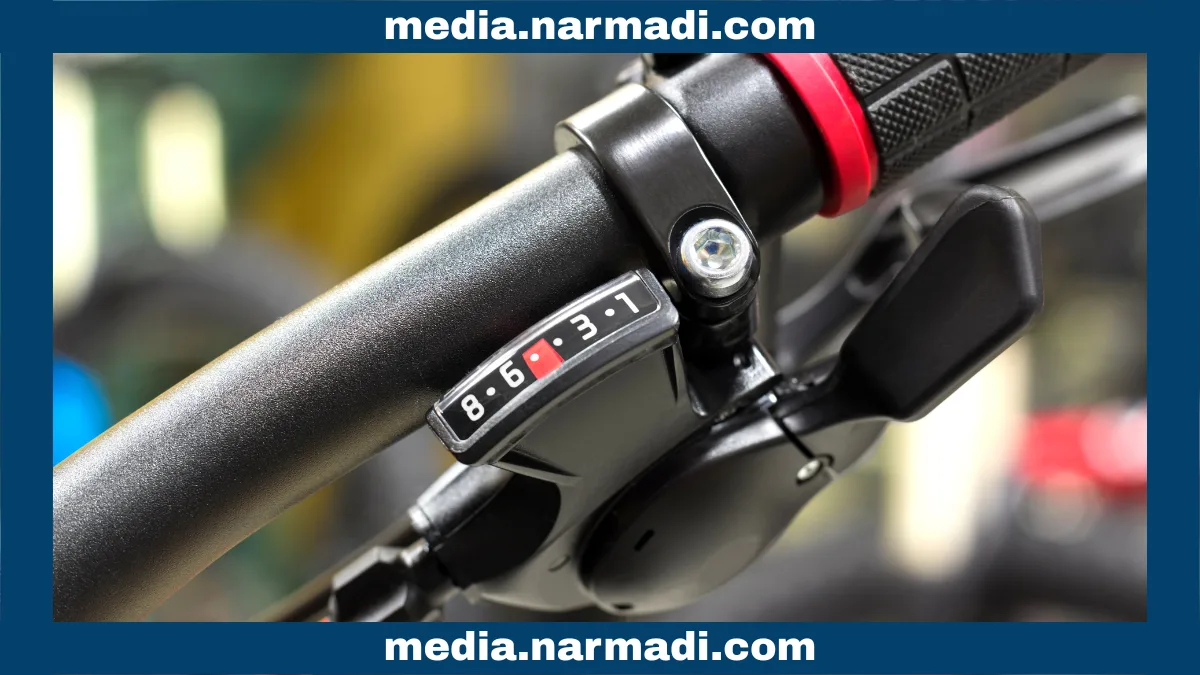Today's world is all about efficiency, with all kinds of technology competing to create devices that are not tethered by cables. In the bicycle industry, electronic shifting bikes have become the biggest wireless innovation in recent years.
The emergence of electronic shifting bikes proves that bicycle innovation is not limited to frame design or lighter materials. Initially, this transmission technology was only for racing bikes, but now it can be found in various modern city bikes.
In this article, we will discuss electronic shifting bikes in more detail, starting from their definition, how they work, their types, their advantages over mechanical systems, and regulations on their use.
What is an Electronic Shifting Bike?

An electronic shifting bike is a gear shifting system that works with electronic signals. This bike does not use traditional cables and mechanical levers to shift gears, but instead only requires pressing a small button on the handlebars to send a signal to the servo motor in the derailleur. Everything is done automatically by an electronic actuator.
This system allows for faster, more consistent, and less risky gear shifting. It also enables automatic gear shifting, allowing riders to focus on the road and reducing chain wear.
How Does an Electronic Shifting Bike Work?

Electronic shifter bikes work by replacing mechanical cable systems with electronic signals. Here is a more detailed description of how they work:
- Pressing the shifter button: The rider presses the shifter button on the handlebars to change gears.
- Signal transmission: The shifter button sends a signal to the derailleur via a cable or wireless signal (Bluetooth or Zigbee) to a small servo motor on the derailleur.
- The small servo motor moves: The servo motor moves according to the command to shift the chain.
- Gear shifting: The chain shifts gears electronically, smoothly, and precisely from one gear to another.
The Types of Electronic Shifting Bikes

There are several types of bicycles with electronic gear shifting systems designed according to the electronic system technology used. Here are some commonly used types:
Fully wireless
As the name suggests, fully wireless electronic shifting does not require mechanical cables to shift gears. The gear shifting system is electronic, with components such as the shifter, front derailleur (FD), and rear derailleur (RD) working wirelessly using separate batteries.
This system provides faster and more precise gear shifting through electronic switches. Riding comfort is also improved because you don't have to pedal when shifting gears. In addition, there is no need for mechanical cable adjustments, making this system require less maintenance.
Semi-wireless
Semi-wireless electronic shifting is an electronic gear shifting system that uses a combination of cables and wireless connections to control the derailleurs. Cables are needed to connect the battery to the FD and RD. Meanwhile, the shifter and other components may use wireless connections.
This system offers faster and more precise gear shifting compared to traditional mechanical systems. In addition, this system is easier to maintain and allows for customization of button placement and functions.
Wired
Wired electronic shifting bikes are bikes with electronic gear shifting systems that still use cables. They use cables from the shifter to the battery, then from the battery to the FD and RD to operate the system.
This system offers faster, more precise gear shifting and minimal maintenance compared to traditional mechanical systems. However, it requires cable routing and a battery for power.
Electronic Shifting Bike Regulation

Electronic shifting bikes use technologies such as Bluetooth and Zigbee, which operate within a specific frequency spectrum. In every country, all Bluetooth and Zigbee-based wireless devices are required to have Radio Frequency (RF) Certification.
Electronic shifting bike regulations require all radio frequency-based devices to meet certain technical standards before they can be sold in that country. This certification ensures that the product complies with government safety and quality regulations and does not interfere with other communication devices.
The certification process involves technical testing, such as frequency adjustment, safety checks, and compatibility with the surrounding environment. Once testing is complete, products that pass will be listed in a Test Report, confirming that they are safe and ready for sale. This report assures customers that the product meets technical standards and is safe.
For companies wishing to sell electronic shifting bikes, Product Compliance Specialists are available to assist with this process. This service includes preparing technical and legal documents, conducting the necessary testing, ensuring regulatory compliance, helping companies streamline the certification process, and providing consumers with confidence in certified products.